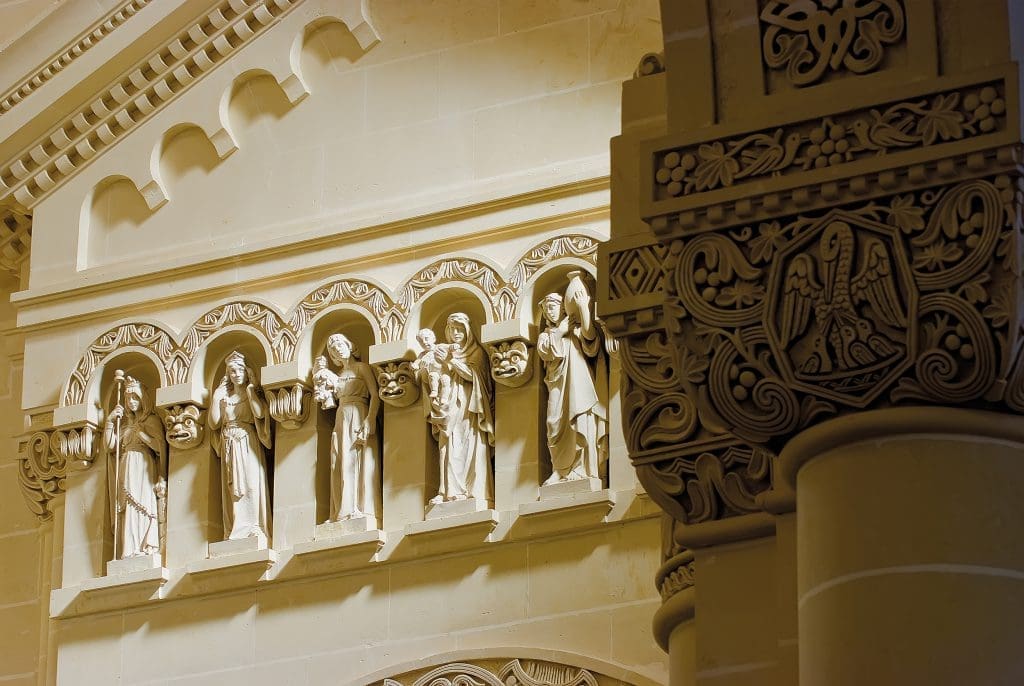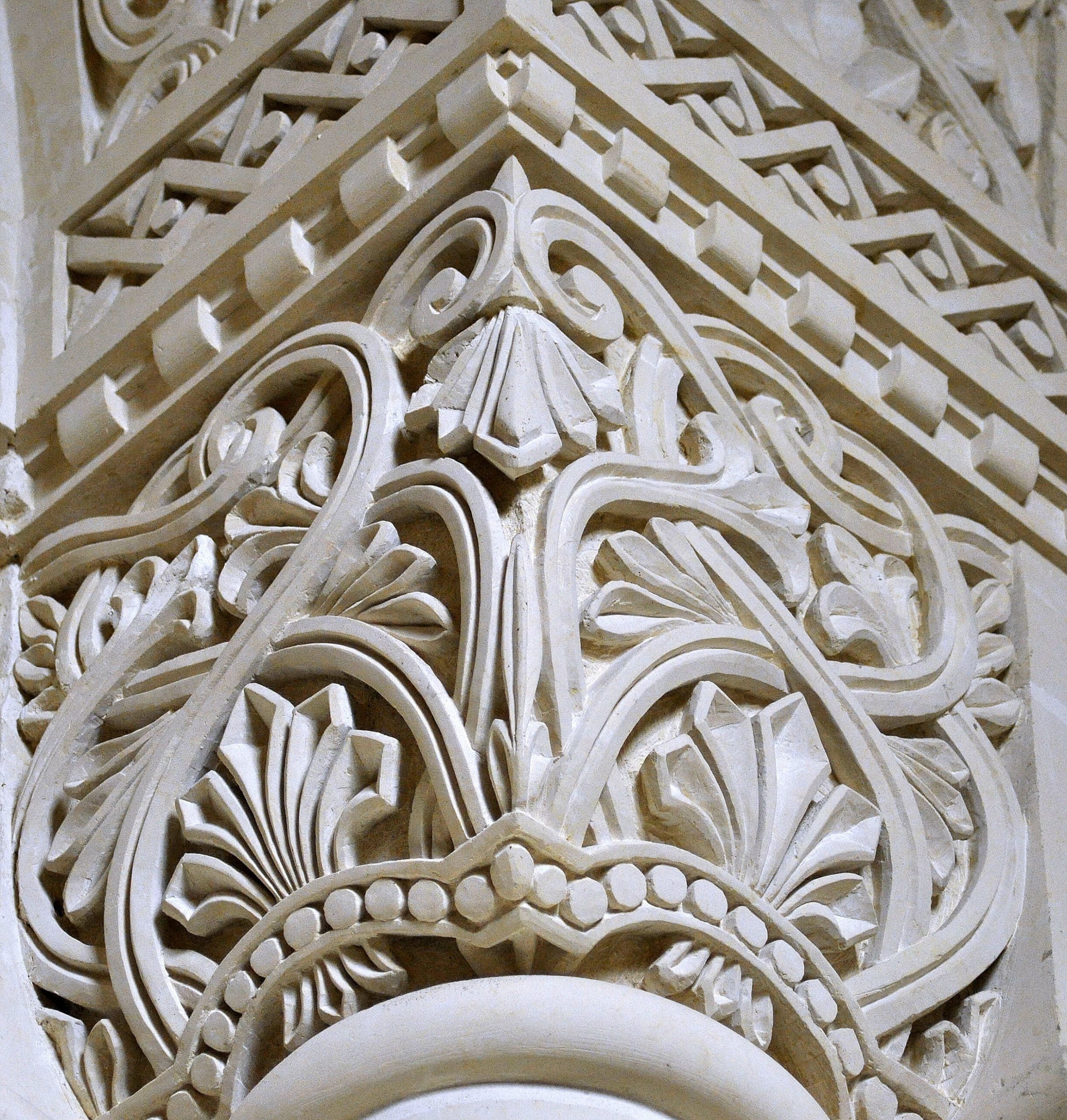Gozo’s Stone Churches and Edifices
Walking through the charming villages of Gozo, you are immediately struck by the island’s deep connection with its stone heritage. While many of the houses feature intricate decorative motifs and sculptural details, it is the churches and grand edifices that truly showcase Gozo’s rich history in stone craftsmanship.
St. George’s Basilica:
A prime example of Gozo’s architectural splendor, St. George’s Basilica in Victoria is an iconic structure built using the island’s signature limestone. This baroque masterpiece, constructed in the 17th century, stands as a beacon of religious devotion and artistic achievement. Its intricate facade, coupled with the grand interior that boasts rich gilded details and breathtaking artwork, represents the island’s deep-rooted spiritual and cultural traditions.
Gozo’s globigerina limestone stands out from the white limestone found in Malta by its unique honey-toned hue, giving it a warmer and softer appearance. This specific type of limestone is sourced mainly from the quarries in the San Lawrenz and Dwejra areas, although historically, quarries in places like Ta’ Sannat also contributed to the island’s stone industry. Over time, many of these older quarries have been repurposed as farmland or open fields.
Formed from the tiny, microscopic remains of deep-sea organisms, globigerina limestone is classified as a soft stone, making it easier to quarry and shape compared to harder varieties. Its malleable nature has allowed craftsmen to work with it for a range of projects, from grandiose buildings such as churches and domes to more delicate decorative elements like sculptures and intricate figurines.
In Gozo, early stone sculpting focused largely on church décor, with many of the island’s churches showcasing finely crafted stone elements. However, by the 1950s, the use of Gozo’s stone began to expand into private dwellings, with skilled artisans producing more elaborate designs. This included detailed features such as balustrades, columns, and accent arches, which gradually became common in the construction of homes and buildings across the island. Today, Gozo’s unique stonework continues to play a vital role in the island’s architectural heritage, preserving a craft that links the past with the present.



